The Top 3D Printing Applications in Sports
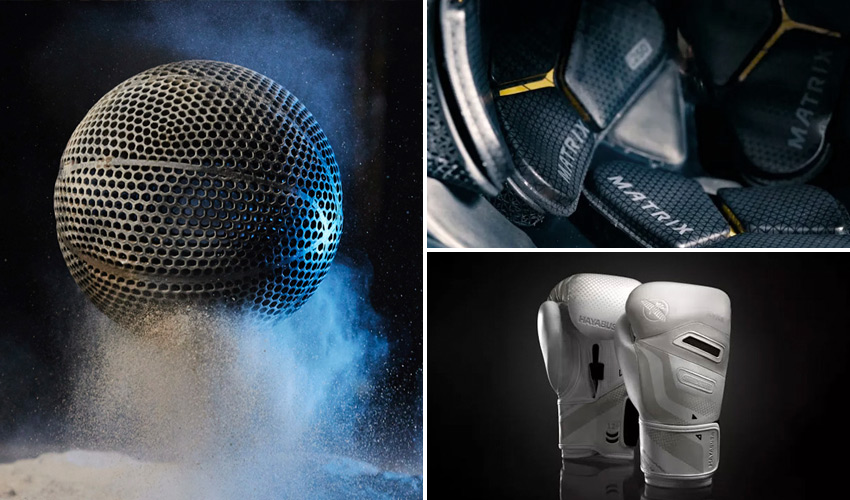
3D technologies are ever increasingly being used in the consumer goods sector. In particular, we have seen a growing role for additive manufacturing in the sports industry over recent years. Not only that but 3D printing in sports is not limited to only a few, isolated sports. On the contrary, ranging from running shoes to ski boots, helmets to sports cars, there is something for almost every fan as well as professionals seeking more customizable gear. Read on to discover what innovations have already been realized thanks to 3D printing in the sports sector.
The Zero2-R Matrix ID Trench Helmet from Vicis
Many helmets do not offer the necessary protection in the event of an impact. This is o@mes the case due to the foam used. The Zero2-R Matrix ID Trench helmet from equipment manufacturer Vicis offers significantly greater protection against injuries thanks to its special padding on the inside. The padding is individually adapted to the shape of the individual player’s head using a 3D scan of the contours of the head and 3D printed. The padding consists of complex GiRer structures that are very light but absorb impacts better than conventional materials. The 3D printing therefore enables a better fit and a lower weight of the helmet. The NFL’s own test laboratory even rates the padding integrated into the helmet as the best head protection for players this year. A number of NFL players are now equipped with such a helmet from Vicis. These include quarterback Patrick Mahomes of the Kansas City Chiefs, Tua Tagovailoa of the Miami Dolphins and Derek Carr of the New Orleans Saints. The company’s aim is to make the product more affordable so that it can also be offered to college and high school athletes.

Credits: Forbes/Vicis
FotoDent® 405 nm Splint from DREVE
Since 3D printing arrived in the dental sector, a lot of innovations and new possibilities have appeared. DREVE is a company established in this sector, which has more than 80 patents. It has a wide range of products from solutions to materials but in this case, we will focus on the FotoDent® 405 nm splint. For its manufacture, a high-quality light-curing material FotoDent® 405 nm is used which offers a very resistant final product with a good surface finish. In addition, it is a biocompatible dental splint that is very easy to clean which makes it perfect for all types of athletes.

Credits: DREVE
3D Printed Kask Elemento Bicycle Helmet
With the Kask Elemento, helmet manufacturer Kask has designed a luxury helmet for various cycling disciplines. The helmet is available in six colors, can be used for gravel, road, cross-country and cyclocross, and has been on sale since spring 2023 for an impressive price of €375. The price is mainly due to the various modern technologies used for production, as several technological elements come together in the Kask Elemento. For example, the helmet features the OCTOFIT+ system for a better fit and individual adjustment to any head shape. This helmet also features Fluid Carbon 12 technology for improved aerodynamics and ventilation and Multipod. The latter is a structure made of elastomer material that is 3D-printed and then inserted into the helmet as an inner lining. The Multipod system also contributes to better ventilation and offers increased safety in the event of falls and impacts thanks to its isotropic features. It is worth mentioning that Kask is not the only brand in top-level cycling that relies on 3D printing. In addition to Kask, Fizik and Specialized also showed off 3D-printed components.

Credits: Kask
3D Printed Bicycle Components
The possibilities in bicycle 3D printing are many and varied. Several projects have already been launched that implement 3D printing in the manufacture of bicycles. One example is T°Red’s Olympic Cycling Falcon Project, which is using the technological innovation of additive manufacturing to produce bicycles for athletes ahead of the 2024 Olympics in Paris. With the new process, the manufacturers aim to use new materials, create an exclusive design and increase sustainability. The company uses the Kobra Max 3D printer from Anycubic to 3D print the parts that are ultimately assembled into a bike. Also to coincide with the 2024 Olympics, global engineering technology company Renishaw and the British cycling team are renewing their partnership. Renishaw is using metal 3D printing to produce lightweight, complex parts for the athletes, designed to increase the speed of the bikes. In addition to bicycle saddles, grips and frames, brake levers can also be produced using additive manufacturing. These are produced by the high-tech company TRUMPF produces these in cooperation with the bicycle brake manufacturer Trickstuff. The advantage here is that the levers can be individually adapted to the rider and are more environmentally friendly and robust.

Credits: Anycubic
KING Supersport-35 3D Printed Golf Club
The KING Supersport-35 is a 3D printed golf club made from 316 stainless steel, created by Cobra Golf in partnership with HP and SIK golf. While its 3D printed body and lattice design ensures that the putter possesses optimal weighting, producing the highest MOI in a blade shape, thanks to SIK Face Technology the putter is able to produce the most consistent and accurate roll for every putting stroke. Created using HP Metal Jet Technology, Cobra Golf’s first ever 3D printed club is certainly a feat.
The Raptor Protective Mask for Athletes
Another interesting application of 3D printing in the sports industry is the creation of protective masks for athletes’ faces. One example is the Raptor mask from the company Invent Medical. It is a face protector for athletes who have suffered a facial injury or want to protect themselves in contact sports. The fully customized mask starts with a 3D scan of the athlete’s face, the design is then refined using 3D software, and finally, it is 3D printed using HP’s Multi Jet Fusion technology. According to the manufacturer, the Raptor mask is able to offer far greater protection than other devices on the market and also aids post-operative recovery from more serious injuries.

Photo credits: Raptor
3D Printed Golf Shoes by Adidas
This is not the first time we have heard about how the Adidas brand is taking advantage of 3D printing to create the soles of its sports shoes. For all types of athletes, the company has created 3D models such as the 4DFWD or the FUTURECRAFT STRUNG, which offer greater cushioning when walking. Now, the company has gone a step further by designing specific shoes for a particular sport: golf. With the so-called Adidas MC87 4D, a unisex and timeless model, they aim to combine the capabilities of new technologies with vintage style. Thanks to Carbon’s Digital Light Synthesis resin 3D printing technology, the new design is inspired by the brand’s previous model. However, Adidas has expanded it in a modern way, spicing it up with contemporary enhancements, such as a waterproof leather upper or improved comfort of this type of shoe.
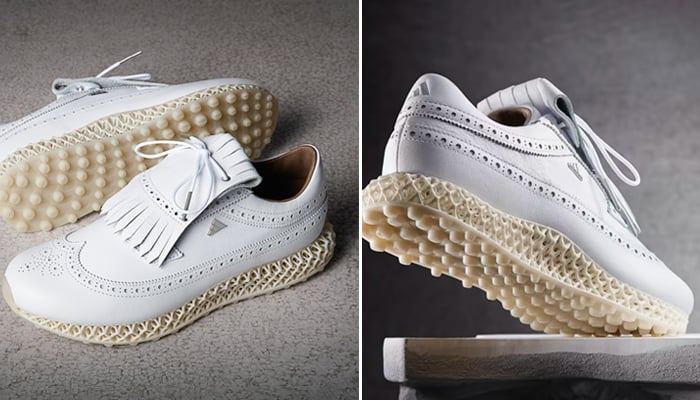
Credits: Adidas
Tailored Fits, 3D Printed Ski Boots
When it comes to ski boots, often skiers are forced to choose between high performance and comfort, boots that are too loose, while more comfortable, are unable to provide the same amount of control. Using state-of-the-art 3D printing technologies, Tailored Fits has developed ski boots that combine comfort and performance. Thanks to 3D scan measuring technology, Tailored Fits are able to 3D print an inner boot specific to the individual, ensuring an incredible direct power transmission. Moreover, the buckle-less design guarantees blood circulation meaning that not only is the user able to get a better feel of the slopes, but also no more cold toes!
Riddell SpeedFlex Precision Diamond Helmet
Safety is key when it comes to helmets, even more so when engaged in a high-contact sport like American Football. For this reason, Riddell along with Carbon, a 3D printing technology company, partnered to create The Riddell SpeedFlex Precision Diamond Helmet, featuring the first-ever 3D printed football helmet liner. Currently ranked one of the NFL’s best-performing helmets, the helmet features a 3D printed lattice liner that can be digitally manufactured using Carbon’s proprietary Digital Light Synthesis™ (DLS™) technology. Part of the reason it is so effective is that it uses Riddell’s Precision-Fit head scanning and helmet fitting process to create a customized, 3D printed helmet liner precisely contoured to the athlete’s head. The project moved from the prototype stage to serial 3D production of the liners with the help of OECHSLER, one of the largest manufacturers in the additive industry, who have produced and delivered thousands of the parts to Riddell using their more than 150 Carbon L1 printers in three continents.
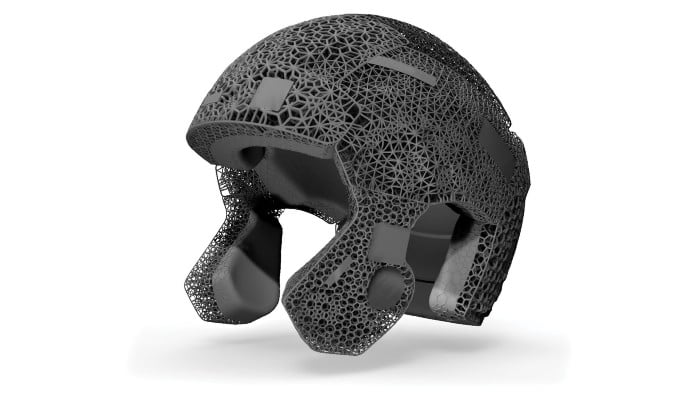
Wilson’s Airless, 3D Printed Basketball
Sports manufacturer Wilson partnered with EOS and DyeMansion to create the first usable prototype 3D printed basketball. Made with SLS 3D printing and post-processing smoothing, the most prominent feature of the ball is undoubtedly the hexagonal lattice structure that allows you to see right through it. Even though there is no air held inside the ball, it has been designed to function and feel as close to the real thing as possible. Wilson has stated that it wants to use 3D printing technology like this to push the boundaries of possibility and “change perceptions” on manufacturing. This airless ball has the potential to bring more accessibility and opportunity to basketball and beyond. What’s more, it has even been given the real test, as it was featured on the court and used by NBA stars during the 2023 AT&T Slam Dunk Contest.
Radford’s Sports Car With 3D Printed Parts
The next on our list may perhaps come as a surprise as it could fit just as well on our ranking of 3D printed vehicles. But racing is a sport and thus a sports car also conceivably belongs here. More specifically, we are speaking about the Lotus Type 62-2 coach-built sports car made by iconic luxury automotive brand Radford. The car boats 500 3D printed parts made by Stratasys and was designed to bring the classic Lotus Type 62-2 supercar to a more modern era by Ant Anstead and former Formula One champion and car designer Mark Stubbs. The parts were made by Stratasys F770™ and F900™ large format printers though PolyJet and SLA were also using, especially for internal parts or rearlight components.
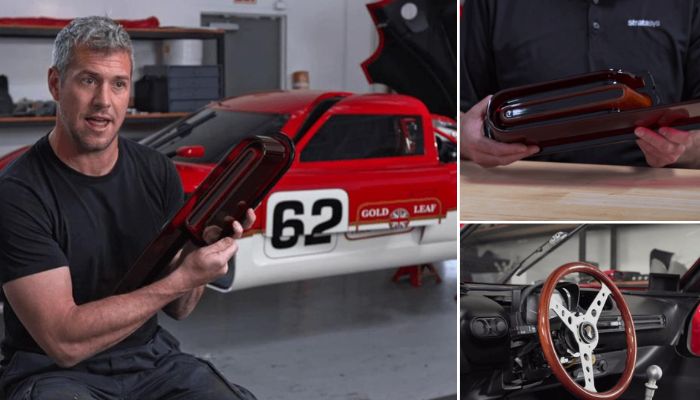
Photo credits:
3D Scanning for Soccer Shinguards
Shinguards are a vital part of any footballer’s equipment, essential to prevent injury on the pitch. And yet, they are often chosen lightly and are not really adapted to each individual’s morphology. That’s why Batoco has come up with a solution to create customized shin guards. To do so, it relies on 3D scanning: the soccer player must 3D scan his shin and send the data to Batoco, which then manufactures the equipment. The company has developed its own 3D scanning application where users can customize all their data. The shin guard is made from carbon fiber, which gives it strength while remaining lightweight – even if the accessory is not 3D printed, 3D technologies here enable the design of a tailor-made product entirely adapted to its wearer.
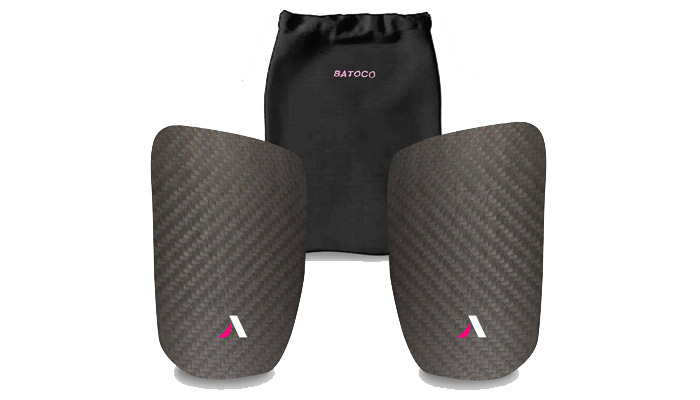
Credits: Batoco
The AMbelievable Shock Absorber
Tennis is a very complete sport and requires great physical strength. Matches can last up to 5 hours and professionals have to perform at the highest level for long periods of time to beat their opponents. This is where fatigue and wear and tear come into play, so any help is welcome in order to maintain this level. Italian company Additive Appliances has 3D printed a shock absorber for tennis players’ rackets. This small device called AMbelievable absorbs the vibration of the blows which makes the arms of tennis players suffer less wear throughout the match. It also prevents injuries such as tennis elbow. All this is thanks to its geometry designed thanks to 3D printing, which is capable of absorbing the three vibration frequencies of the rackets.
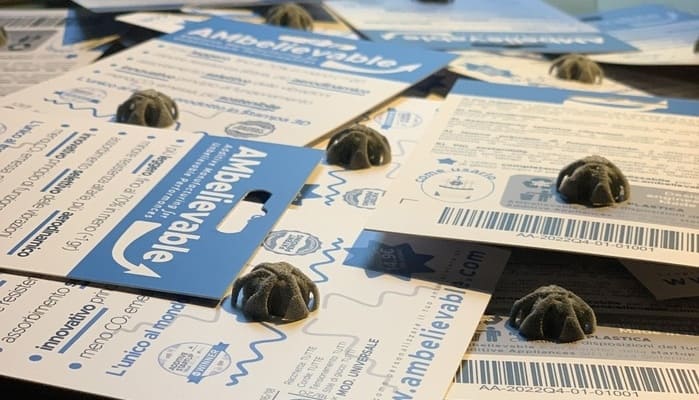
Credits: Additive Appliances
Hayabusa 3D Printed Boxing Gloves
Earlier this year, Japanese sporting goods manufacturer Hayabusa unveiled their new T3D boxing gloves made with additive manufacturing. The first of their kind, these 3D printed gloves offer the same benefits as regular boxing gloves but they eschew the typical foam padding in favor of thousands of layered lattices for shock absorption. Because of their sleek and innovative structure, the manufacturer claims they are more durable and long-lasting than other boxing gloves as well. Designed for comfort and performance, these futuristic gloves certainly look set to knock out the competition.
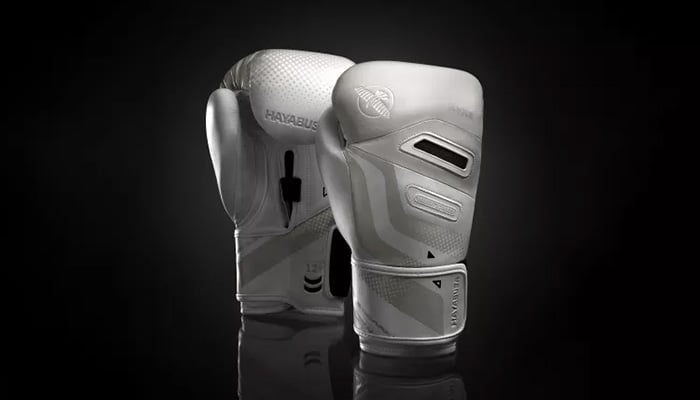
Image credits: Hayabusa
What do you think about the growing role of 3D printing in sports, and which of these applications is your favorite? Let us know in a comment below or on our LinkedIn, Facebook, and Twitter pages! Don’t forget to sign up for our free weekly Newsletter here, the latest 3D printing news straight to your inbox! You can also find all our videos on our YouTube channel.







Many helmets do not offer the necessary protection in the event of an impact.
3d a woman with no attitude and we might be onto something. Make a printer that prints a duplicate dream woman.